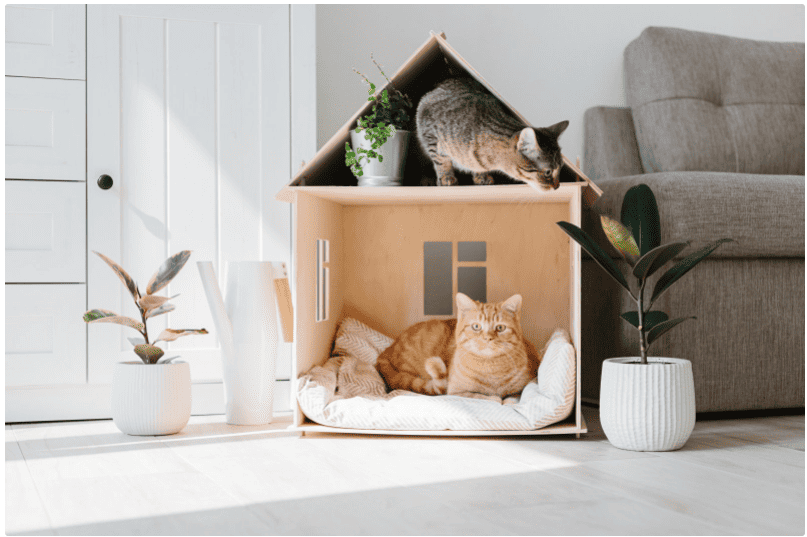Moving home is stressful enough for humans but if you have pets, you need to consider their well-being too. If you have successfully purchased your property by using a firm like the best conveyancing solicitors London have such as Sam Conveyancing you’ll be chomping at the bits to get in.
You might be worried about your cat getting lost or trying to return to your old house. If you plan things well, then it is possible to relocate happily with your pampered puss into your gorgeous new home. Here’s how to move with a cat:
When the moving day arrives, keep your cat in one room with the door and windows closed to keep them safe from the noise and disturbance. Place a sign on the door saying ‘do not open’ so movers will know your cat is in there. If you’re worried that they might escape, it might be wise to book them into a cattery for a couple of days over move time.
Before introducing your cat to the new property, make sure one room is primed and ready for them to feel safe in. Place their familiar items in that room, such as bed, toys, food bowls and litter tray etc. Something that smells of both you and your old home is a good idea to help calm them. Keep the door and windows closed for now. Now you can move things into the house knowing that your cat is safe and secure. Keep them confined to just one or two rooms at the start so as not to overwhelm them.
Let them rub their scent on the new home, things like walls, doors and any new furniture for example. This will help them feel more secure and confident. Before you move, you might want to take a cotton bud and gently wipe it around your cat’s face to gather some of their scent. Wipe this at cat height in the room where you will place the first when they first arrive. Repeat this every day to build-up their unique scent around the house before you let them out for the first time.
You should aim to keep your cat inside the new house for at least a fortnight. This gives them lots of opportunity to really familiarise themselves with the territory. If they show signs of agitation at being kept in then your cat is probably confident enough to be let out to explore.
Before allowing them out, sprinkle some of their litter around the edge of your new garden. Not only does this help to calm your cat but will also act as a warning to any neighbouring cats that there is a new kid on the block. Make sure your cat is wearing an ID collar and even better if they are microchipped. Remember to update the microchipping company of your new address.
During the first couple of weeks, only let your cat out once a day and it’s best to do it just before you feed them, so they had an incentive to stray too far. You are aiming to make your new home the centre of their territory, somewhere that smells safe and is a source of food. If your cat is especially nervous, you may wish to wait for a month or more before letting them out. You know your cat best.


